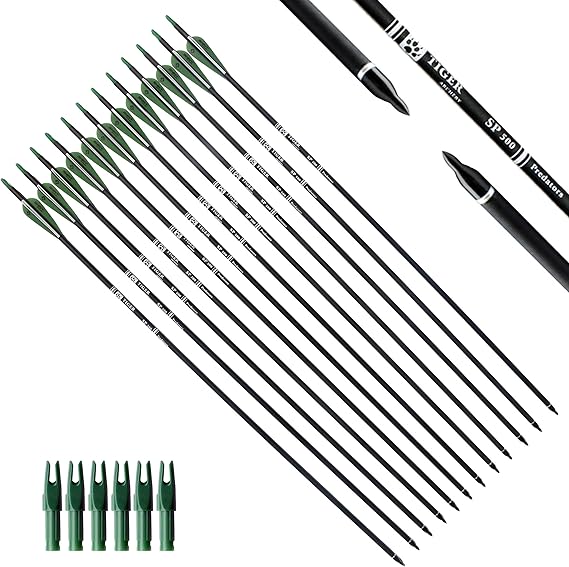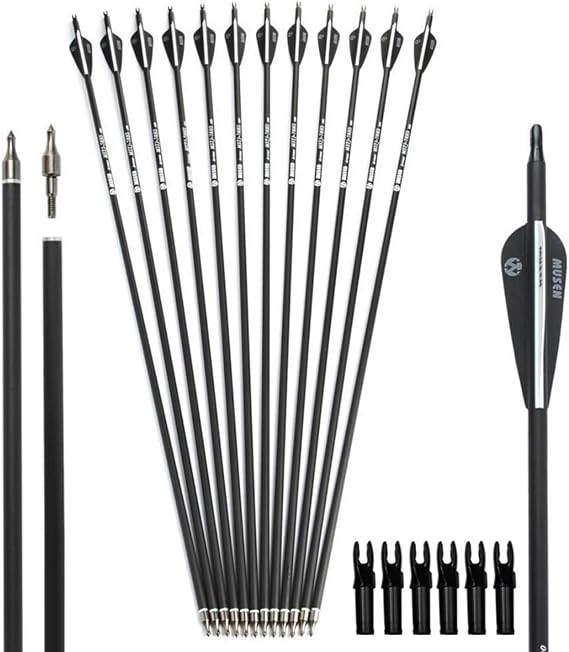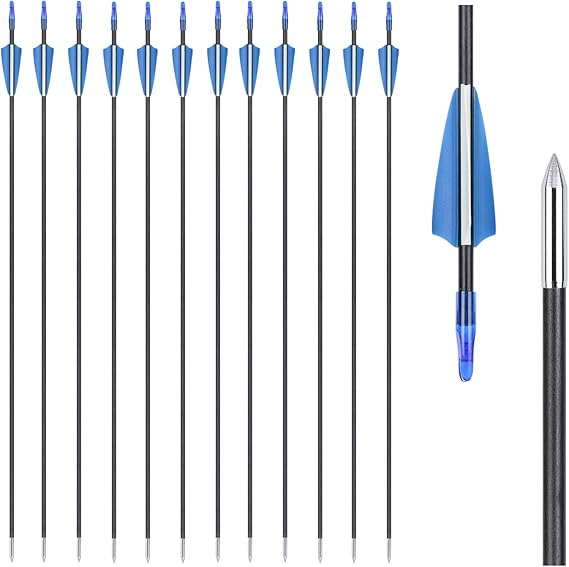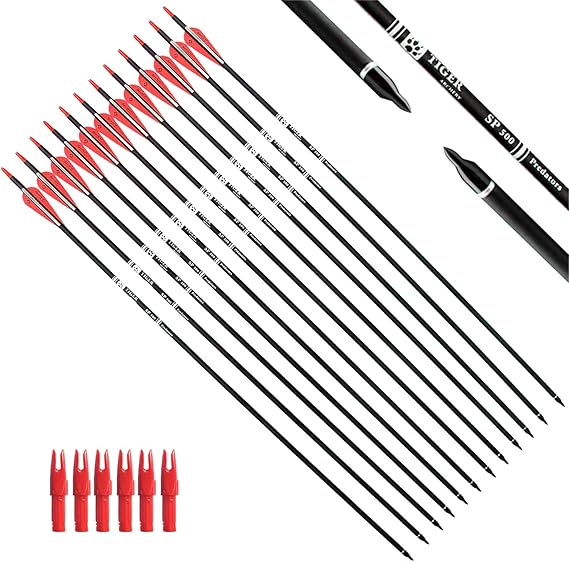Archery Arrow Sizing Tool
Recommended Arrow Specifications
An arrow sizing chart is a useful tool for selecting the appropriate size of arrows based on factors like draw length, draw weight, and intended use (e.g., target shooting or hunting). Below is a general guide to help you determine the right arrow size for your bow setup:
Looking for the perfect fit? Check out these Best-Selling Archery Arrow.






Arrow Sizing Chart
| Draw Weight (lbs) | Recommended Arrow Spine (inch) | Arrow Length (inches) |
|---|---|---|
| 20-30 lbs | 500-600 | 28-30 |
| 30-40 lbs | 400-500 | 28-30 |
| 40-50 lbs | 350-400 | 28-32 |
| 50-60 lbs | 300-350 | 28-32 |
| 60-70 lbs | 250-300 | 30-32 |
| 70+ lbs | 200-250 | 30-32 |
Note: The specific arrow spine depends on other factors such as your shooting style, arrow material (carbon or aluminum), and bow design.
An archery arrow size chart helps you select the right arrows for your bow based on the specifications like draw weight, draw length, and the arrow shaft’s material. Here’s a breakdown of what to consider when selecting arrows, along with a basic size chart for reference:
1. Arrow Length
- Draw Length: The length your bowstring is pulled back determines your arrow length.
- Standard Arrow Lengths:
- Typically measured from the nock to the end of the arrow shaft (not including the point).
- Add 1-2 inches to your draw length for your arrow length.
- Example: If your draw length is 28 inches, you might need arrows that are 29 to 30 inches long.
2. Arrow Spine
- Arrow spine refers to the stiffness of the arrow shaft.
- Stiff Arrows: Suitable for higher draw weights.
- Flexible Arrows: Suitable for lighter draw weights.
- To find the correct spine, you need to know your bow’s draw weight and draw length.
3. Arrow Shaft Material
- Carbon: Lightweight, strong, and durable.
- Aluminum: Less expensive but heavier and less durable.
- Wood: Traditional but less consistent in performance.
4. Arrow Weight
- Light Arrows: Quicker speed, but less stability.
- Heavy Arrows: Greater kinetic energy, better penetration, but slower speed.
5. Nock and Point Sizes
- Nock Size: Compatible with the bowstring (e.g., small or large nocks).
- Point Size: Depends on your arrow’s intended use (target or hunting). Standard points are 100 or 125 grains.
6. Fletching/Vaning
- Typically 3-4 vanes are used for stabilization.
- Length and shape depend on arrow type and intended use.
FAQs About Archery Arrows
1. What are the main parts of an arrow?
An arrow typically consists of four key parts:
- Shaft: The main body of the arrow
- Fletching: The feathers or vanes at the back that stabilize flight
- Nock: The slotted tip that clips onto the bowstring
- Point (or Tip): The front end, which can vary in type (field point, broadhead, etc.)
2. How do I choose the right arrow length?
Arrow length should match your draw length. A good rule of thumb:
Arrow length = Draw length + 1 to 2 inches
Always consult a sizing chart or professional if you’re unsure.
3. What is arrow spine, and why does it matter?
Spine refers to how much an arrow flexes when shot.
- A lower spine number = stiffer arrow
- A higher spine number = more flexible arrow
Correct spine ensures safety and accuracy. It depends on your bow’s draw weight and arrow length.
4. What are arrows made of?
Common materials include:
- Wood: Traditional, mostly for recurve or longbows
- Aluminum: Durable and consistent
- Carbon: Lightweight, fast, and popular for all bow types
- Carbon-Aluminum hybrid: A blend of strength and performance
5. What’s the difference between field points and broadheads?
- Field Points: Used for practice and target shooting
- Broadheads: Used for hunting — they’re larger, sharper, and cause more damage
6. Can I use the same arrows for different bows?
Not always. Arrows must match your bow type, draw weight, and draw length. Using incorrect arrows can be unsafe or damage your bow.
7. How do I maintain my arrows?
- Check for cracks or bends before each use
- Make sure nocks and fletchings are secure
- Store arrows in a protective case away from extreme heat or moisture
8. What arrow should I use for target practice?
Carbon or aluminum arrows with field points are great for target shooting. They’re durable, reusable, and cost-effective.
9. What is fletching and does its shape matter?
Fletching are the vanes or feathers that stabilize the arrow in flight.
- Straight fletching: Faster flight, less spin
- Helical fletching: Adds spin for better accuracy
- Offset fletching: A mix of both
Final Tips:
- Consult Manufacturer Recommendations: Many arrow manufacturers provide charts for choosing the right spine and length for your bow setup.
- Professional Advice: A pro shop can help ensure you get arrows that match your draw weight, length, and shooting style.






